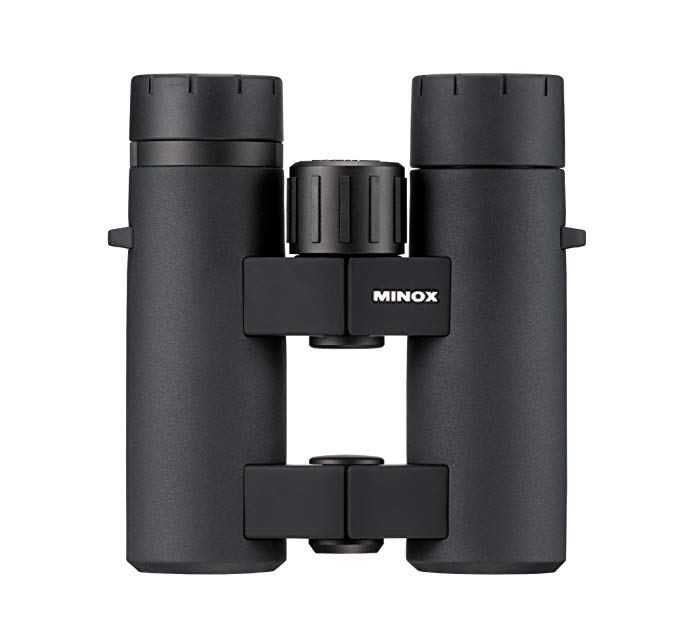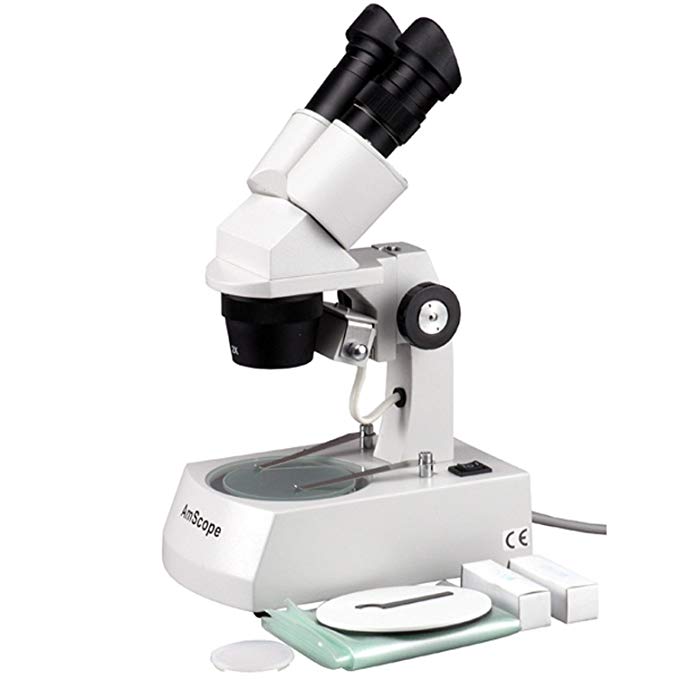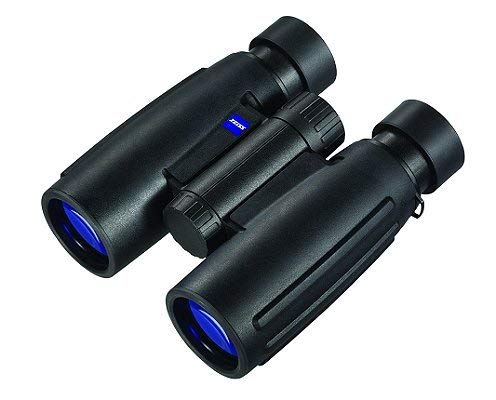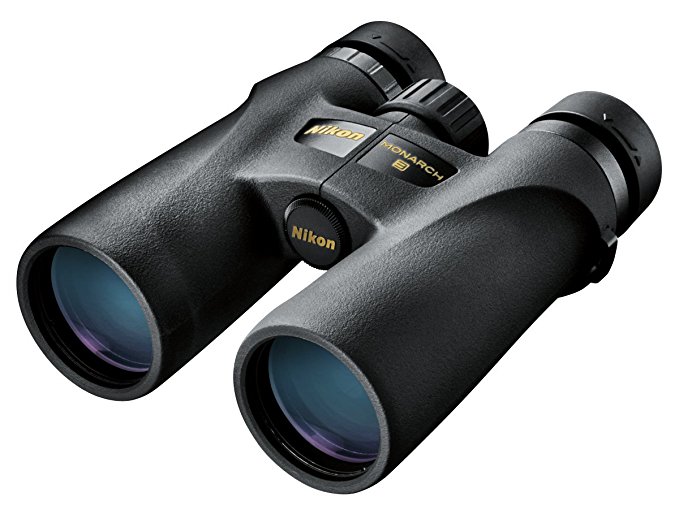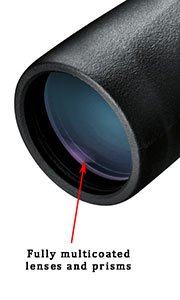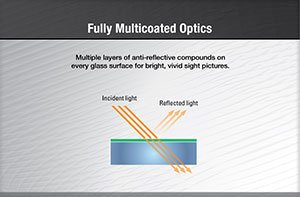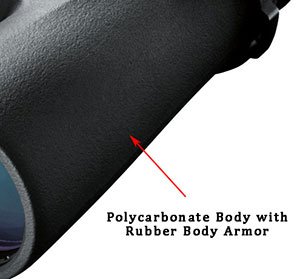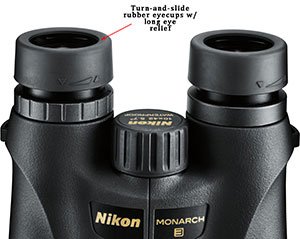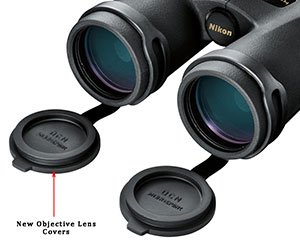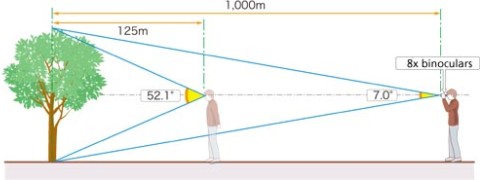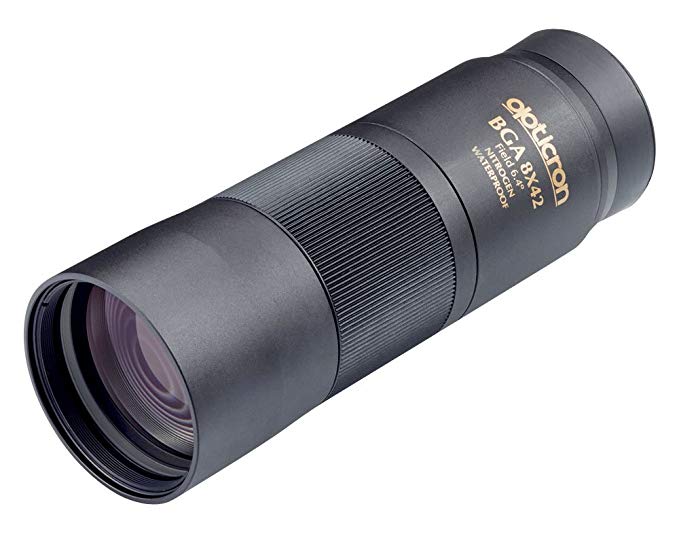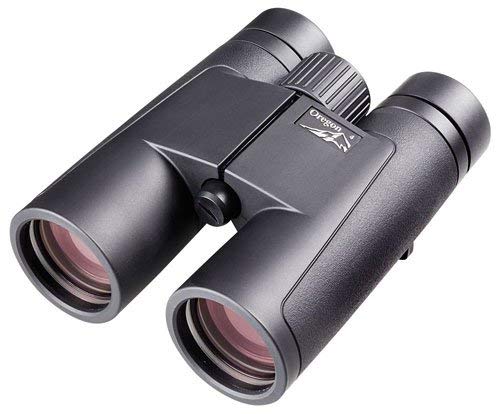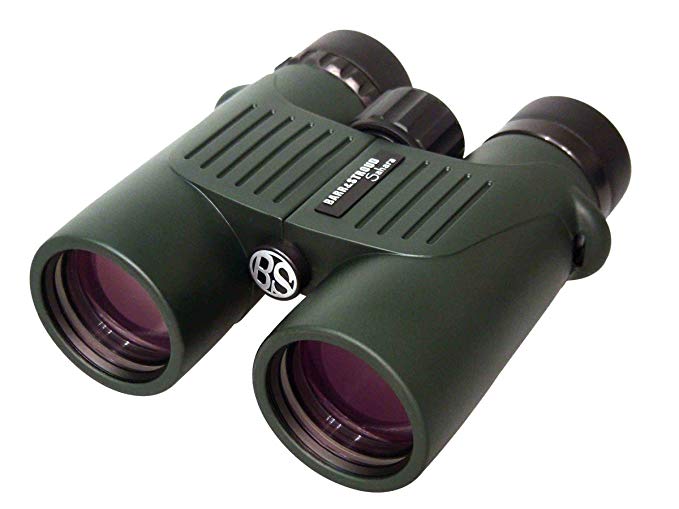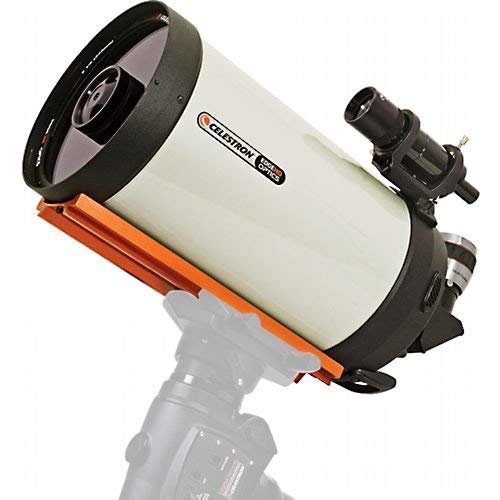Size:10×42
Product Description
The Benchmark of Performance:The new Monarch 3 is setting the standard for quality in binoculars. With high reflected phase correction coated roof prisms and fully multi-coated lenses, this binocular is designed to outshine the competition!
From the Manufacturer
PERFORMANCE JUST GOT A NEW NUMBER! With its legendary MONARCH bloodlines and enhanced optical system— the all-new MONARCH 3 can maximize every moment you spend in the field— with incredibly bright, high-resolution views from the first rays of light until the very last. Designed for a lifetime of tough and exciting adventures, this binocular comes equipped with multi-click, turn-and-and-slide rubber eyecups, long eye relief and a new lightweight and rugged, yet sleek and comfortable, ATB body. The all-new MONARCH 3, the new benchmark of performance. Available in 10x42mm and 8x42mm models.
Technical Specs:
- Focusing System – Center Focus
- Magnification – 8x or 10x
- Objective Diameter (mm) – 42
- FOV @ 1000 yds – 299 to 330 ft
- Close Focus Distance (ft) – 9.8
- Exit Pupil (mm) – 4.2
- Eye Relief (mm) – 17.4 to 24.1
- Waterproof/Fogproof – Yes
- Prism coating – High Reflective Silver Alloy Phase corrected prisms
High Reflective Silver Alloy Phase corrected prisms – helps eliminate the degradation of the image caused by different light phases reflecting in the binocular.
Fully Multicoated lenses and prisms
Polycarbonate Body with Rubber Armor – designed to be rugged and durable
Multi-click Turn and Slide Eyecups with generous eye relief – great for eyeglass wearers
New Objective Lens Covers
Nikon MONARCH 3 Additional Highlights
- Unique Ergonomic Design – Soft feel that helps you stay comfortable for long periods of glassing
- Tripod Adaptable
- Waterproof / Fogproof – Nitrogen filled and O-Ring sealed
Warranty Information
Nikon is dedicated to quality, performance and total customer satisfaction. If your Nikon binocular, Spotting Scope or Fieldscope requires service or repair not covered by our 25 Year Limited Warranty, Nikon will repair or replace it (even it was your fault) for just $10, plus return shipping and handling.
Excludes – StabilEyes, Laser Rangefinders and Spotting Scope/Fieldscope eyepieces.
FAQ’s
Real field of view
Real field of view is the angle of the visible field, seen without moving the binoculars, measured from the central point of the objective lens. The larger the value is, the wider the viewfield available. For example, binoculars with a wider field of view are advantageous for locating fast-moving wild birds within the viewfield. This also applies for finding small nebulas or a cluster of stars in astronomical observations.
Apparent field of view
Apparent field of view is the angle of the magnified field when you look through binoculars.
The larger the apparent field of view is, the wider the field of view you can see even at high magnifications.
With the conventional method used previously, the apparent field of view was calculated by multiplying the real field of view by the binocular magnification. (With this formula, apparent field of view wider than 65˚ is called wide field of view.)
After revision, Nikon’s figures are now based on the ISO 14132-1:2002 standard, and obtained by the following formula:
tan ω’ = τ x tan ω
Apparent field of view: 2ω’
Real field of view: 2ω
Magnification: τ
(With this formula, apparent field of view wider than 60° is called wide field of view.)
For example, the apparent field of view of 8x binoculars with an 7.0°real field of view is as follows:
2ω’ = 2 x tan-1 (r x tan ω)
= 2 x tan-1 (8 x tan 3.5)
= 52.1°
Relative Brightness
Relative brightness value is obtained by squaring the diameter of the exit pupil. The greater the relative brightness is, the brighter the image will be. With 8×42 binoculars, the brightness is (42÷8)2= 28.1. This means that if the magnification is the same, the larger the effective diameter of the objective lens, the brighter the image will be.
Do binoculars with the same exit pupil offer the same brightness?
No. Brightness may vary even if the exit pupil is the same. This is because the amount of light reaching the viewer’s eyes varies according to the number of lens elements and quality of lens/prism coatings. Superior optical design and highquality coating greatly contribute to the brightness of binoculars. Brightness values specified in product brochures, etc. are theoretical ones calculated in the design process. Please note these factors when comparing actual brightness values.
Prism Coatings
Multilayer coating is also applied to prisms to raise transmittance. A roof prism system has one surface that does not feature total internal reflection, so vapor deposition with metals, etc. must be used to raise the reflectivity of this surface. Also, phase-correction coating on roof surface ensures high-contrast images.
*Binoculars’ brightness and contrast are affected by not only prism coatings, but also the number of objective lens and eyepiece lens, and types of coatings.
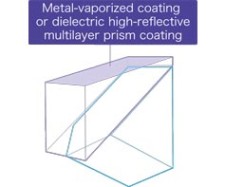 Metal-vaporized, high-reflectivity prism coating Metal-vaporized, high-reflectivity prism coating
Using vacuum-vaporization technology, metallic material such as aluminum or silver is applied to the reverse side of a prism surface that is not totally reflective. This raises the reflectivity of the prism mirror surface.
Dielectric high-reflective multilayer prism coating
This coating features reflectance that exceeds 99%. By utilizing light interference, this coating assures high reflectivity across the full visible range, and ensures high color reproducibility. |
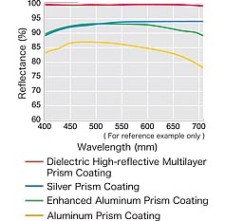 Reflectance characteristics of prism coatings on mirror surface Reflectance characteristics of prism coatings on mirror surface
The horizontal axis indicates the wavelength of light. The vertical axis indicates the reflectance of light.
Binoculars’ brightness is determined not only by the reflective mirror, but also by the total optical system such as the number of lenses and quality of coatings. |
Phase-correction coating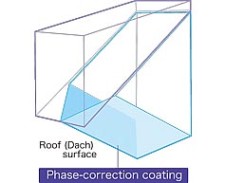
A roof (Dach) surface can cause phase shift of light that affects image resolution. This phenomenon is caused by phase differences arising from total light reflection on a roof (Dach) surface and it can occur with even a perfectly processed prism. Phase-correction coating is applied to the surface to minimize loss of resolution, ensuring high-contrast images.
Twilight Factor
The factor that has the greatest impact on resolution or image detail, will be dependent upon the amount of light available during the time of observation. During daylight hours, when your eye pupil size will be only about 2 to 3mm, magnification will be the principal factor in image resolution. At night, with the eye pupil dilated to 6 to 8mm, aperture size is the controlling factor. In twilight conditions both of these factors control resolution effectiveness and the twilight factor is the term that compares binocular performance under these conditions.
The twilight factor is calculated by taking the square root of the product of the magnification and the aperture. The higher the twilight factor, the better the resolution of the binocular when observing under dim light conditions. For example, a 10 X 40 (twilight factor 20) would effectively resolve better under these conditions than a 7 X 35 (twilight factor 15.4) even though the 10 X 40 has a smaller exit pupil. Remember, however, that the twilight factor does not take into account the transmittance or quality of the optical system.


